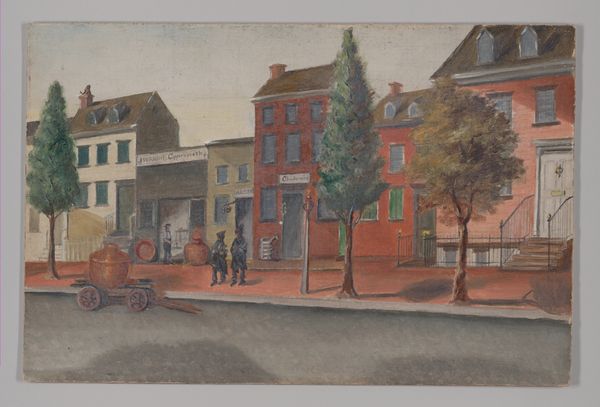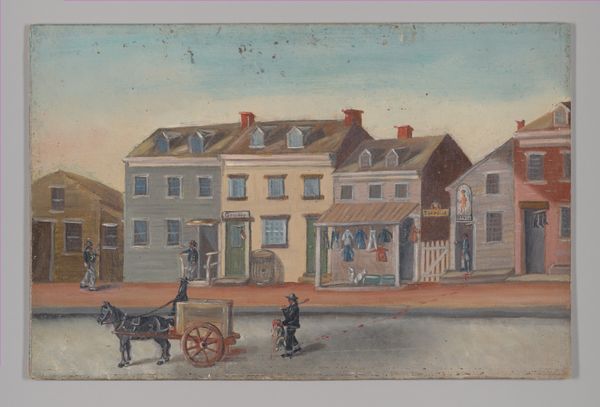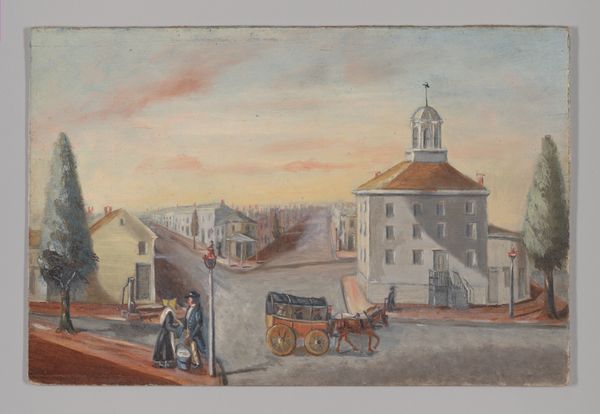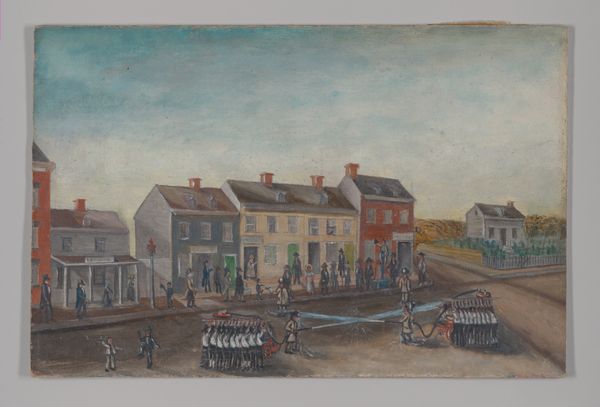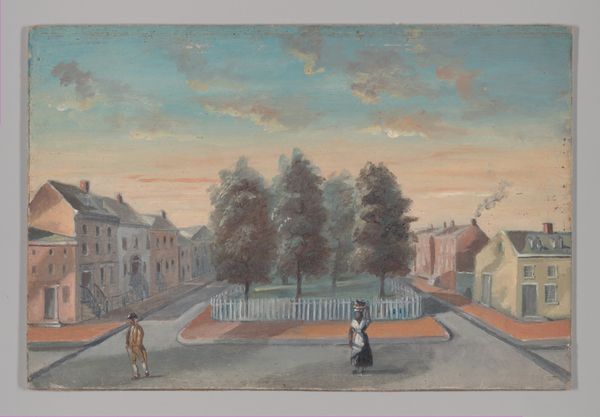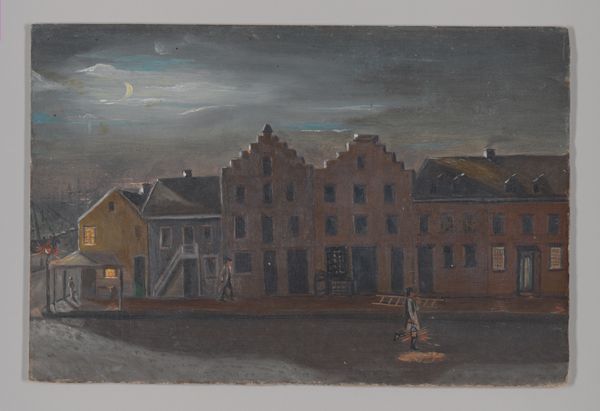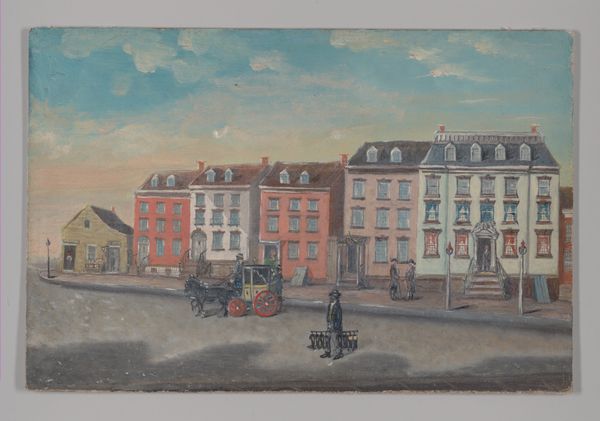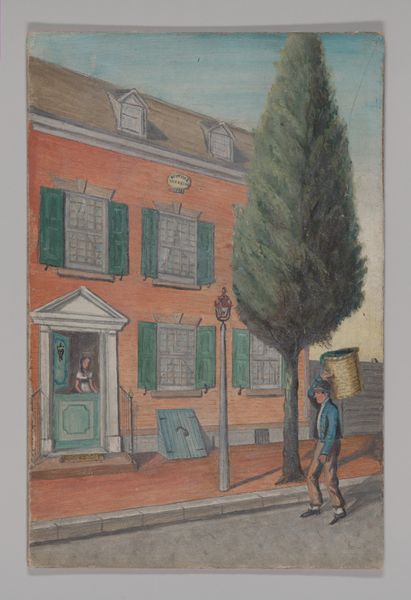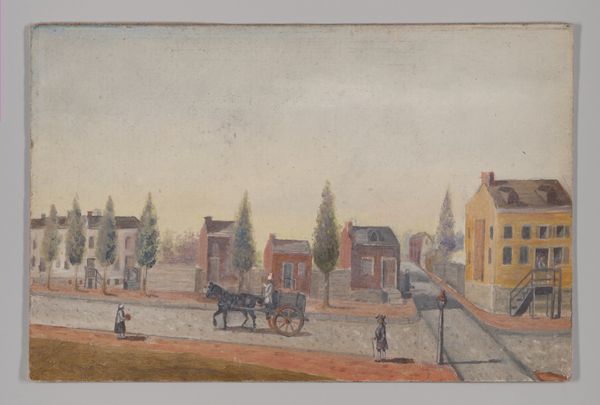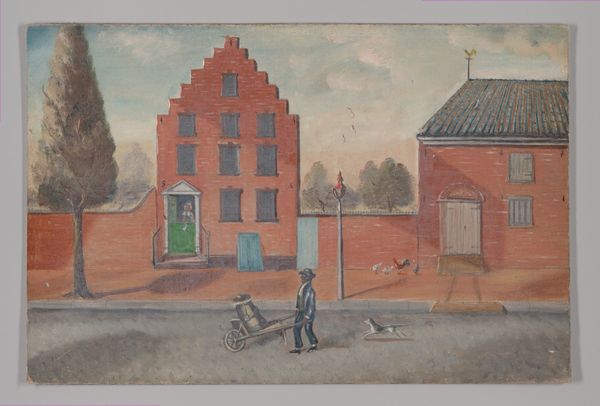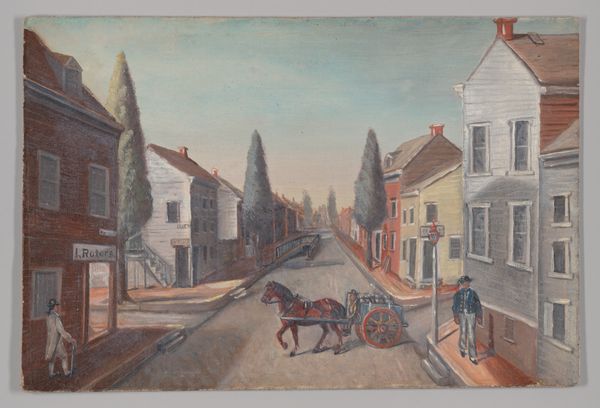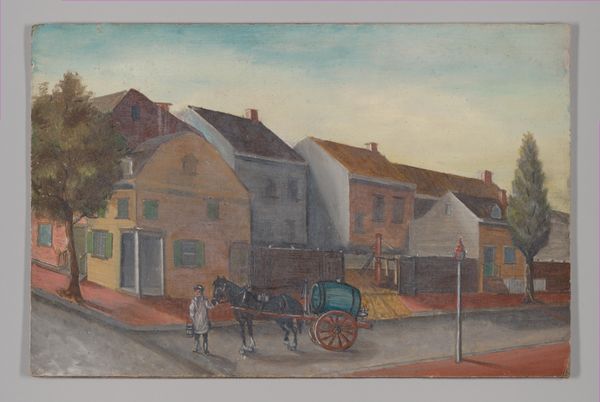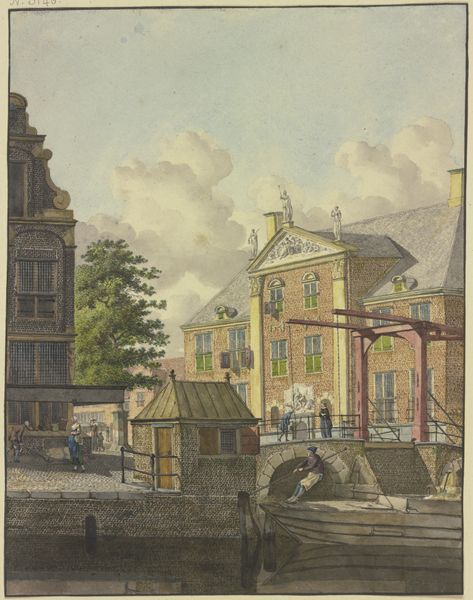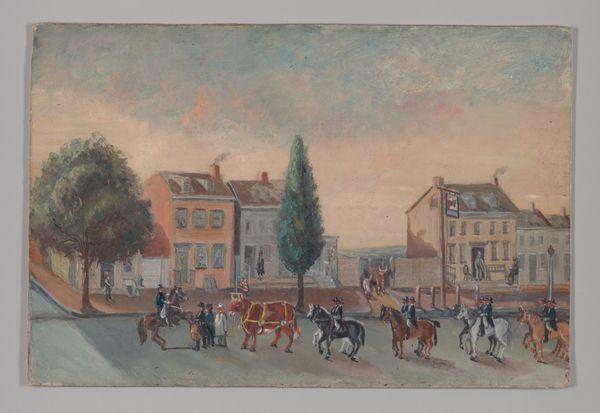
plein-air, watercolor
#
water colours
#
impressionism
#
plein-air
#
watercolor
#
coloured pencil
#
cityscape
#
genre-painting
#
realism
#
building
Dimensions: 6 x 9 1/8 in. (15.2 x 23.2 cm)
Copyright: Public Domain
Curator: William P. Chappel painted this watercolor titled "Fly Market" around 1870. You can find this genre scene on display here at The Met. What are your first impressions? Editor: It's quite charming, almost naive. The composition is very symmetrical, bisected by that central market structure. The colors are muted, giving it an aged, dreamlike quality. Curator: "Fly Market" presents an intriguing lens through which we can examine 19th-century urban commerce and social structures. It’s a plein-air study, suggesting direct observation of the labor and activity within this market setting. Editor: I’m immediately drawn to the lines—the repetitive verticality of the market stalls, balanced by the horizontal bridge and the facades of the buildings. The subdued palette underscores the geometric precision. Is "Fly Market" a reference to the rapid exchange within the market, a comment on fleeting transactions perhaps? Curator: More likely the stalls of merchants trading minor goods, the ephemeral nature of informal economies perhaps, as seen through the artistic styles prevalent at the time like impressionism and realism. The artist emphasizes the collective endeavor of exchange over any singular figure or transaction. Look at how watercolor is utilized: it is quick, light, and allows for the depiction of fleeting light and bustling city atmosphere, it suggests Chappel was interested in portraying a realistic sense of this particular time. Editor: Yes, I see what you mean about capturing a realistic feeling of place. I note also that the bridge introduces a dynamic curvature, contrasting the architectural rigidity. Curator: Exactly. The bridge serves not only as a physical connector but also, in a metaphorical sense, links different aspects of society together by uniting buyers, sellers, and various city structures that create the framework in which markets function. The use of watercolours emphasizes the social exchange by capturing it immediately in a moment, using methods readily available and easily transportable. Editor: Considering how he used watercolor and coloured pencil techniques—it really serves to underscore a broader sense of commerce, exchange, and societal dynamism. This piece has a way of creating its own dialogue through these technical decisions. Curator: Precisely. Understanding the work through its method encourages us to look closely at its relation to consumerism in that era and the rapidly evolving cultural landscapes that came with it. Editor: It certainly encourages us to reconsider value itself; to ask, what are the markets we are not even seeing when we consider art?
Comments
No comments
Be the first to comment and join the conversation on the ultimate creative platform.
